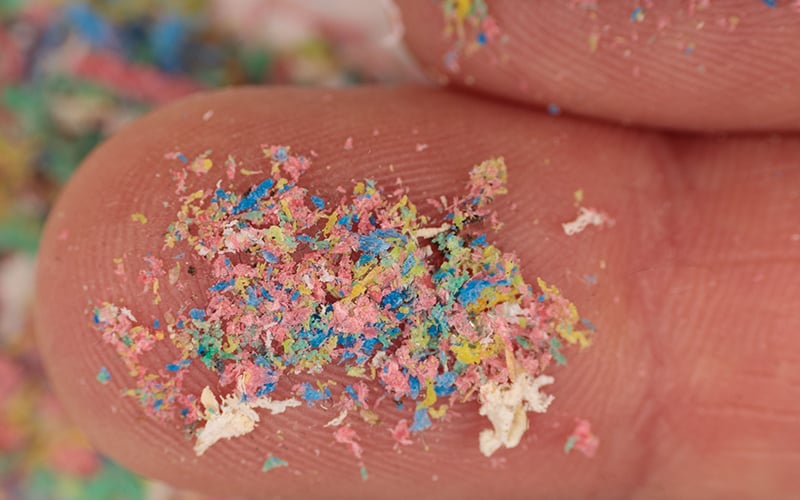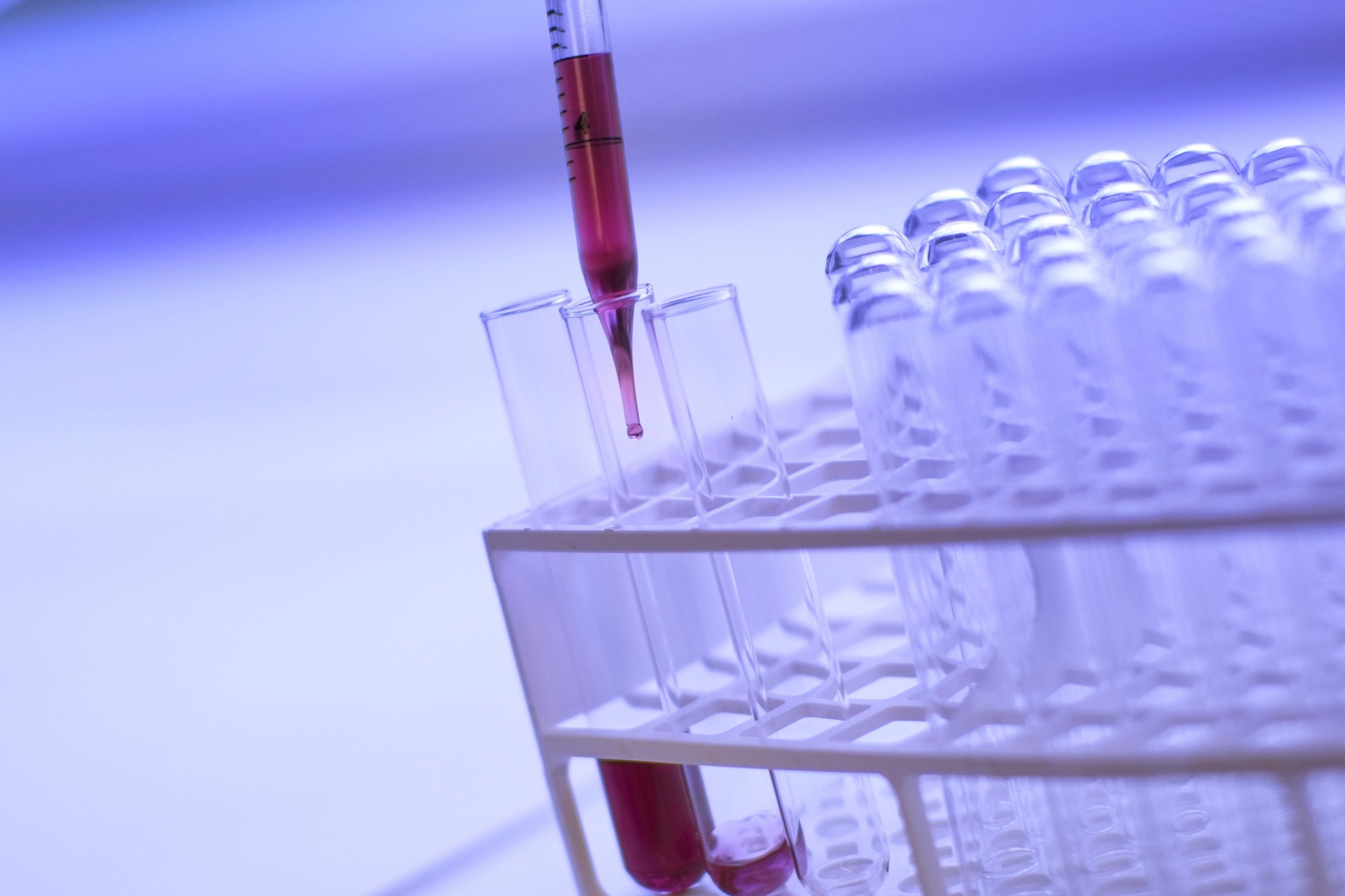Microplastics and their effects on human health
Among the most concerning issues related to plastic pollution is the emergence of microplastics, tiny plastic particles that originate from two sources. Primary microplastics are intentionally manufactured as small particles, such as microbeads in cosmetics, industrial abrasives, and synthetic textiles. Secondary microplastics result from the degradation of larger plastic waste, including food packaging due to environmental factors. These tiny particles, which measure less than 5 millimeters persist in environment and have infiltrated ecosystems, soils, water supplies, and even the human body, raising serious concerns about their potential health effects.
The Magno Project, an initiative dedicated to sustainable food packaging solutions, has emphasized the urgency of addressing microplastic pollution. Through research and advocacy, the project aims to reduce plastic waste at its source and promote consumer awareness of the hidden risks associated with food packaging materials.
Food Packaging Pollution and Its Contribution to Microplastics
Plastic packaging is the most commonly used material in the food industry due to its affordability, durability, and ability to extend shelf life. However, these same characteristics make it one of the most persistent pollutants in the environment. Of the seven billion tonnes of plastic waste generated globally so far, less than 10 per cent has been recycled. The rest is either incinerated, landfilled, or, worse, discarded in natural ecosystems. (Visual Feature | Beat Plastic Pollution, 2022)
Over time, exposure to sunlight, heat, and mechanical wear causes plastic waste to break down into microplastics—particles smaller than five millimeters. This process, known as fragmentation, is particularly problematic because it does not eliminate the plastic; it simply makes it smaller and more difficult to remove from the environment.
Single-use plastics, such as plastic bags, takeout containers, and beverage bottles, are significant contributors to microplastic pollution. Multi-layered packaging, often used for snacks, frozen foods, and ready-to-eat meals, poses an even greater challenge due to its complex composition, making it nearly impossible to recycle and more likely to break down into microplastic particles.

Photo by Free Malaysia Today, licensed under CC BY 4.0
How Microplastics Enter the Human Body
Microplastics have become an unavoidable part of modern life contaminating food, drinking water, and even the air we breathe. These tiny plastic particles enter the human body through multiple exposure pathways, primarily ingestion, inhalation, and dermal contact.
One of the primary ways humans ingest microplastics is through food packaging. Plastic containers and wrappers can release microplastics directly into food, especially when exposed to heat or acidic substances.
For instance, plastic water bottles have been found to leach microplastics into their contents, with bottled water containing up to 22 times more microplastic particles than tap water. Similarly, takeaway food containers made of polystyrene (Styrofoam) and polypropylene can shed microplastic particles when in contact to hot liquids or greasy foods. Even plastic tea bags release billions of microplastic fragments when steeped in hot water. (Carrington, 2019)
Additionally, microplastics contaminate food indirectly through environmental pollution. Marine organisms, for example, ingest microplastics present in polluted waters, which then accumulate in the food chain and ultimately reach human consumers through seafood. In Europe, studies have found microplastic contamination in products such as fish, shellfish, salt, honey, and even fruits and vegetables, suggesting that microplastics are permeating the entire food system.

Photo by Flickr, licensed under CC BY-NC-ND 2.0
If you would like to learn more, please refer to our Magno publication on Plastic Pollution in Food Packaging Systems: Impact on Human Health, Socioeconomic Considerations, and the Regulatory Framework. This publication explores critical issues, including:
- How food packaging plastics migrate into food, exposing consumers to contaminants.
- The impact of microplastics, which can trigger inflammation, oxidative stress, and cause organ damage.
- The ability of microplastics to penetrate biological barriers and disrupt stem cell function.
- The broader risks plastic pollution poses to human health, ecosystems, and socioeconomic stability.
- The urgent need for sustainable practices and policies to mitigate these health risks.
For more information, explore our findings in Magno.

Photo by StockVault, licensed under CC0 1.0
Health Risks Associated with Microplastics
The presence of microplastics in the human body raises is proven to have serious potential health impacts. Although research is still ongoing, early findings point out that microplastic exposure may have harmful consequences at multiple biological levels.
Microplastics pose a serious threat to human health, as they have been linked to endocrine disruption and hormonal imbalances, triggering inflammation and immune system dysregulation, increasing cardiovascular risks, potentially crossing the blood-brain barrier to cause neurotoxicity and cognitive effects, impacting fertility and reproductive health, disrupting the gut microbiome and contributing to digestive disorders, while also contaminating ecosystems, food supplies, and water sources, leading to cascading environmental and indirect health consequences. (Najahi et al., 2025)
If this would not be sufficient, another major concern is the chemical additives present in plastics. Many plastics contain endocrine-disrupting chemicals, such as bisphenol A (BPA) and phthalates, which have been linked to hormone imbalances, reproductive issues, and developmental disorders. When microplastics are ingested, these chemicals may leach into the body, interfering with normal hormonal function.
Additionally, microplastics can act as carriers of toxic pollutants. Due to their high surface area, they can adsorb and accumulate heavy metals, pesticides, and industrial pollutants from the environment. Once inside the body, these contaminants may contribute to inflammation, oxidative stress, and even an increased risk of diseases such as cancer and metabolic disorders.
Another area of concern is the potential for microplastics to accumulate in human organs. Recent studies have detected microplastics in human blood, lung tissue, and even the placenta of unborn babies. This suggests that microplastic particles can travel through the bloodstream and cross biological barriers, possibly leading to long-term health effects that are not yet fully understood.

Photo by rawpixel.com, licensed under CC0 1.0
How Consumers Can Reduce Their Exposure to Microplastics
While systemic change is necessary to combat microplastic pollution at a larger scale, individual consumers can also take action to reduce their purchase, exposure and environmental impact. One effective step is to limit the use of plastic food packaging by choosing products in glass, paper, or metal packaging whenever possible. Opting for fresh, unpackaged produce instead of pre-packaged alternatives can also help minimize plastic consumption. («Guidance For Reusable Packaging», s. f.)
Another critical measure is to avoid heating food in plastic containers, as heat accelerates the breakdown of plastic and increases the release of microplastic particles. Transferring food to ceramic or glass containers before microwaving is a safer alternative. Similarly, switching from plastic water bottles to reusable stainless steel or glass bottles can significantly reduce daily microplastic intake.

Photo by CCNull, licensed under CC BY 2.0 DE
Consumers can also support or discard businesses and brands depending on whether they prioritize sustainable packaging solutions, as reusable packaging, or not or just advocating for the change to others.
The growing body of evidence linking food packaging pollution to microplastic contamination underscores the urgent need for action. Governments must enforce stricter regulations on plastic production and waste management, while businesses should invest in truly sustainable packaging business models that do not degrade into harmful microplastics. At the same time, research into the health effects of microplastics must continue to inform policies and public health initiatives.
By fostering collaboration between science, industry, and consumers, the shift towards a microplastic-free food system is not only possible but necessary. The choices made today—both at the consumer and institutional levels—will determine the health of future generations and the environment they inherit.
In this line, Magno Project is at the forefront of advocating for sustainable food packaging alternatives that do not contribute to microplastic pollution. By promoting research into biodegradable and compostable materials, the project seeks to minimize the release of plastic particles into the environment.
For those interested in spread the word and explore practical solutions to reduce microplastic exposure from food packaging, we invite you to explore our Practice Abstract on Reducing Microplastic Pollution in Food Systems. This document provides actionable insights for consumers, businesses, and policymakers on minimizing plastic contamination, transitioning to sustainable packaging, and supporting systemic change. Access the full document here: Practice Abstract 1: MAGNO on Plastics & Microplastics Pollution – MAGNO-PROJECT






